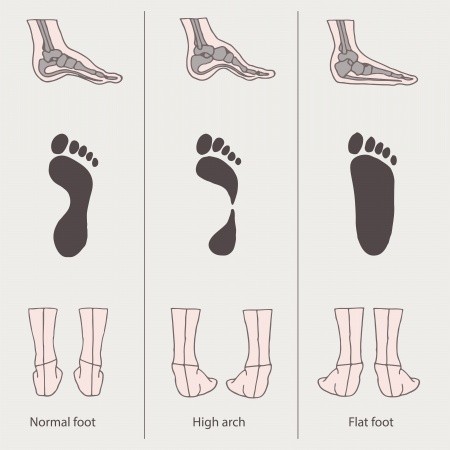Walking is great exercise. However, before you take one step, you need to make sure you’re wearing the right walking shoes. Otherwise, your feet will pay you back with blisters, corns and calluses. Below are some tips to help you choose the right walking shoes within your budget.
What You Need to Know about Walking Shoes
Walking shoes can cost from $19.99 to over $170. However, a brand name or higher cost doesn’t mean the walking shoes will have the right features or fit. A good pair of walking shoes should provide excellent support and cushioning. And you can find that at a reasonable price.
Flexibility and Support
To check for flexibility and support:
- Hold the shoe by the heel and toe. Bend the toe upward. The shoe should bend under the ball of the foot.
- Twist the sole of the shoe from the heel to the toe. The shoe should provide light to moderate resistance when twisted.
- Look for flex grooves cut horizontally across the forefoot of the bottom of the shoe. Flex grooves enable the foot to bend and flex properly when toeing off while walking. If the shoes don’t have flex grooves, the bottom of the shoe should be flexible.

Kathy Carandang, founder of WalkEZStore, recommends New Balance Health Walking Lace-up Sneakers at http://www.fittinglyyours.com/.
Cushioning
Compared to running, walking isn’t as hard on your feet. Therefore, walking shoes don’t require as much heel cushioning as running shoes. Instead, walking shoes often provide more cushioning under the ball of the foot. Most walking shoes have removable insoles that cushion and support your foot and arch. They may also have gel, foam or air midsoles to help reduce impact during the foot strike phase of the gait cycle.
Heel Stability
Walking shoes have lower heel profiles than running shoes. The heel of a walking shoe has a slight slope on the outer side to help steady your foot and ankle during the roll-through motion of walking. This bevel also supports a more efficient foot strike.
The heel counter of the walking shoe is a piece of plastic sewn into the back of the heel cup. It reinforces the heel and provides stability. The heel counter also keeps your foot in place while walking. To check the heel cup, squeeze it to ensure it doesn’t collapse inward easily.
Shoe Uppers
Walking shoe uppers are usually made of leather, mesh or synthetic material. They hold your feet in place while providing ventilation.
How to Get a Good Fit
A good shoe fit is imperative for the support of your foot and to prevent blisters and other injuries. Some things you need to consider when selecting walking shoes include:
The shape of your feet. Your walking shoes should fit the shape of your feet. Shoes that are too narrow or wide can cause blisters or calluses. The toe box should be roomy enough so you can flex your toes up as you plant your heel during the gait cycle. You should also be able to spread out and flex your toes when toeing off.

Arches of the Feet
Photo credit: 123RF / Ewelina Kowalska
Generally, you should have a half-inch between your longest toe and the top of the shoe. Plus, you should have about a half-inch between your longest toe and the front of the shoe. Otherwise, the toe box is too small and will restrict your feet, causing pain.
Your arch type. Your walking shoes should accommodate your arch type.
High arches – Look for walking shoes that provide good cushioning to prevent excessive strain on your joints and muscles. A curved last may also help. (A last refers to the shape of the sole.)
Low arches or flat feet – Look for walking shoes with a straight last. The shoes should also provide motion control to help stabilize your feet.
Normal or neutral-arched feet – Look for walking shoes with firm midsoles and straight to semi-curved lasts. The shoes should also provide moderate rear-foot stability.
For more information on how to properly fit your walking shoes, refer to the WalkEZStore’s Shoe Fitting Guide. Remember, just because a friend recommends a certain pair of walking shoes, that doesn’t mean they’re the right walking shoes for you. You need to try several pairs to find the best support and cushioning for your feet.
Pain-free Walking with ezWalker® Custom Orthotics
Does pain from foot conditions like bunions, plantar fasciitis, or Achilles tendonitis keep you from walking? Besides a good pair of walking shoes, you need to consider wearing custom orthotics like ezWalker® Custom Fit Orthotics. ezWalker® Custom Orthotics help heal common foot ailments that cause foot pain. And they help prevent future foot conditions from occurring by improving the bio-mechanical function of your feet. You’ll not only have better foot strength, but you’ll also have greater balance and stability. ezWalker® Custom Fit Orthotics have been proven to improve foot function in as little as six months to a year. And with our 90-day, money-back guarantee, you’ve got nothing to lose but your pain.
Visit the WalkEZStore website to learn more about ezWalker® Custom Orthotics. Or, click here to schedule a gait consultation with Kathy Carandang, our certified pedorthist. Keep your feet from hating you when you walk with ezWalker® Custom Fit Orthotics.
Because … when your feet feel good, you feel good.®
Disclaimer: The information included in this article is for educational purposes only. It should not be used as a substitute for professional medical advice, diagnosis or treatment.
Cover photo credit: 123RF / Blazej Lyjak


